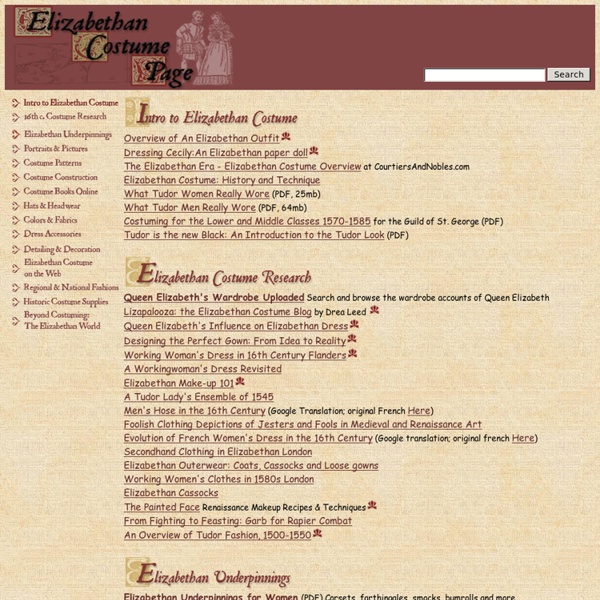



Partlet and Sleeves The partlet and sleeves (I’ve intentionally saved that part until the almost end of this dress diary so that you are by now amazed by my work and won’t beat me too hard after reading this ;-) ) I’m very patient, yes. In fact, I’m incredibly patient – someone once said that I must have “the patience of a saint” to do what I do, when seeing my “Isabel” doll gown, especially the stays. However, I am by no means so patient to actually embroider the incredible blackwork of Elizabeth’s “Pelican” partlet and sleeves – this would have taken until I’m very old and gray, I guess…. even *with* the embroidery machine I have…. so….. ahem… …this is where the fine black permanent markers come into play. I’ve cut the sleeves and partlet parts from the fine silk-linen batiste I had – a beautiful material, slightly crisp, yet soft; structure likely to silk organza – but not that stiff. I then stretched each of those parts on my silk painting frame and… *ahem*… In other words: It’s mine, and I like it.
Milieux Pelican gown Navigation for this costume:Introduction – Materials – Smock – Farthingale – Petticoat – Bodice – Skirtings – Rolled Sleeves – Overskirt – Forepart – Ruffs – Partlet and Sleeves – Jewelry making: Headdress; Necklace; Pelican Jewel; Sleeveband; Girdle; Wristbands; Fan – Finished gown – Funny Comments – Miss Starkie – Quiz The construction diary of the “Pelican” gown reproduction I have absolutely no idea why I started making this gown, except of wanting to make something exceptional – which, in my humble opinion, is a goal I have achieved. This dress diary is very, very long. It became so long over a time span of several weeks and grew to a size that I personally would never have expected – in the end, I had 25 different pages describing various parts of this costume. The diary also has many, many, many pictures – which may result in long loading times on some pages. This gown was not made in the order in which the pages are shown here on the web. These were some words I just had to say.
Canadian Institute for Theatre Technology Elizabethan Loose Gown I've heard nothing but good things about the Margo's. I have her Elizabethan and Tudor patterns and could not be happier, however this time round I really don't want to spend the $30.00 on a pattern. That's the cost of 2 linen smocks! I've not heard good things about Reconstructing History and personally, I have the jacket pattern and there is no help in the sewing side. The sleeves on the jacket do not fit without rework (at least for me). Suggested Fabrics: Kirtle & Sleeves: medium weight silk or linen Gown: silk velvet, plush, or brocade Yardage Requirements: Kirtle outer material & lining " 4 yds (each) at least 45" wide hem linings & facings 1½ yds (each) at least 45" wide center panel 2 yds at least 45" wide Gown outer material (with nap) 8 yds at least 45" wide outer material (without nap) 4 yds at least 45" wide lining 4 yds at least 45" wide Sleeves outer material 2 yds at least 45" wide lining 2 yds at least 45" wide brocade decoration 2 yd at least 45" wide
Scenic Design - Theatre Arts - Guides at Penn Libraries Penn Libraries has several databases and print materials for researching the scenic design elements of an era: costume, architecture, furniture, and other stage elements. 16th Century Woman's high-necked shift Summary: I needed to make a new shift for use at SCA events and Jamestown, and wished to try out more hand sewing techniques. I used white linen cloth, 3.5 oz weight from Fabrics-store.com and Londonderry 50/3 linen thread, already on hand, to create it. This project was begun in Spring 2007, and finally completed in July 2008. (Completed pictures coming soon.) Evidence: There are a few surviving shirts, high necked smocks or night shirts from this period. Most plain shirts were no doubt used up, or sold to second hand shops to then be passed on in the used clothing market until they were naught but scraps. For this shift I decided to use elements from two particular extant garments. Materials and Construction: I used materials already in my sewing stash to create this new smock. Counter-intuitive to our modern methods of construction, I decided to finish or hem the edges of each pattern piece before assembling the smock using a whip stitch for the seams. Resources: Arnold, Janet.
Motley Collection of Theatre & Costume Design The Motley Collection of Theatre and Costume Design is a valuable source of documentation on the history of theatre and is housed in the Rare Book and Special Collections Library. It is a rare collection of original materials on the theatre comprising over 5000 items from more than 150 productions in England and the United States. These materials include costume and set designs, sketches, notes, photographs, prop lists, storyboards, and swatches of fabric. The Motley Group consisted of Margaret Harris, her sister Sophia Harris, and Elizabeth Montgomery, who designed sets and costumes from 1932 to 1976 for plays by Shakespeare and modern classics, opera, ballet, and motion pictures. Their designs were used in productions in the West End of London, the Royal Shakespeare Theatre, the English National Opera, and in the United States on Broadway and the Metropolitan Opera in New York City. Their first work was for a 1932 production of Romeo and Juliet directed by John Gielgud.